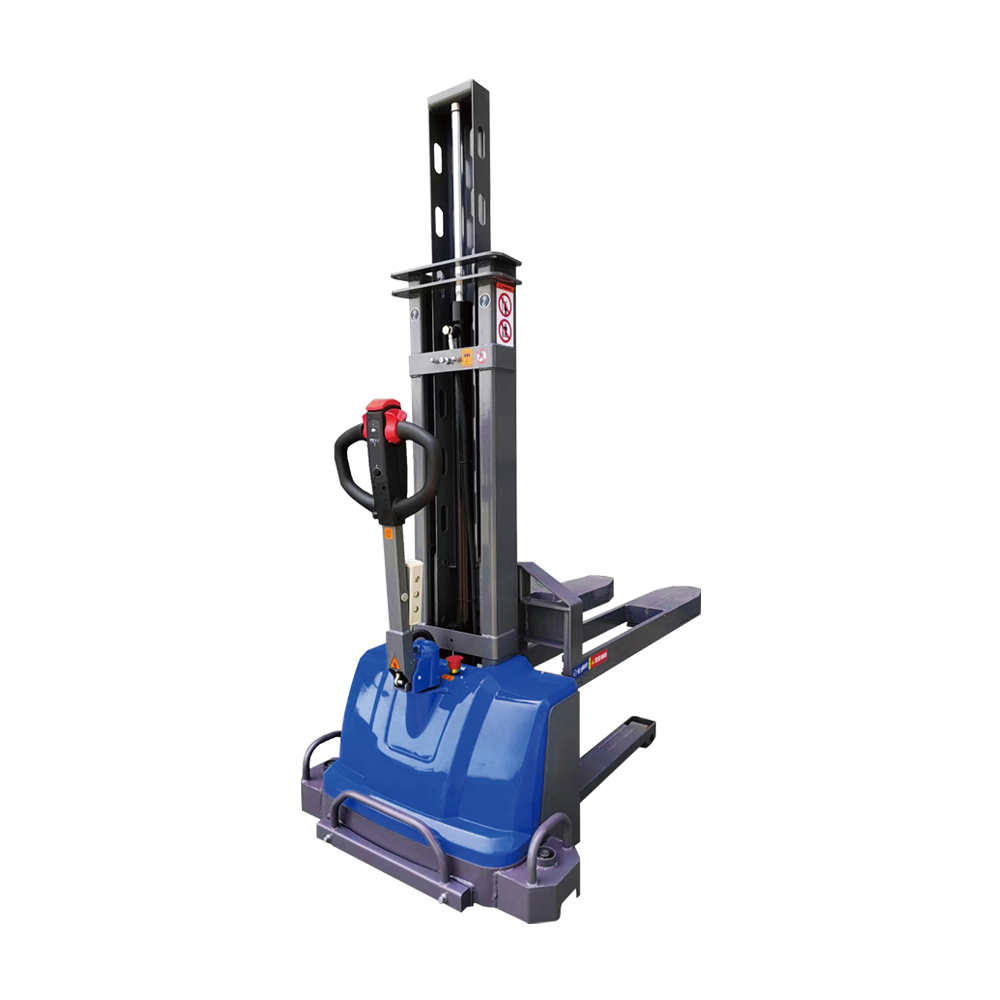When it comes to optimizing warehouse operations, the role of material handling equipment cannot be overstated. Among the many innovations in this field, self lifting stacker have emerged as a game-changer, revolutionizing the way goods are stored and moved within warehouses. In this comprehensive guide, we delve into the world of self lifting stacker, exploring their benefits, functionality, and impact on efficiency. Whether you’re a warehouse manager, logistics professional, or simply curious about cutting-edge technology, this article is your gateway to understanding the power of self-lifting stackers.
Self lifting stacker, also known as self-propelled stackers, are versatile material handling devices designed to lift, transport, and stack goods within warehouse environments. Unlike traditional forklifts, self-lifting stackers are compact and maneuverable, making them ideal for narrow aisles and confined spaces. These innovative machines are equipped with a lifting mechanism that eliminates the need for manual lifting, reducing the risk of strain-related injuries for warehouse personnel. With their ability to handle palletized loads and navigate tight corners with ease, self lifting stacker are transforming the landscape of warehouse operations.
The adoption of
self lifting stacker offers a myriad of benefits for warehouse management. Firstly, these machines enhance operational efficiency by streamlining the process of moving and stacking goods, thereby reducing labor hours and increasing productivity. Furthermore, self lifting stacker contribute to improved workplace safety, as they minimize the physical strain on workers by automating the lifting process. In addition, their compact design allows for better space utilization within warehouses, maximizing storage capacity. With the ability to seamlessly transition between stacking, transporting, and loading tasks, self lifting stackers are a strategic investment for businesses looking to elevate their warehousing capabilities.

As the logistics industry continues to embrace automation and robotics, self lifting stackers are positioned as a pivotal component of the future warehouse ecosystem. With advancements in technology, these stackers are being equipped with smart features such as automated route planning, obstacle detection, and integration with warehouse management systems. This convergence of hardware and software empowers self lifting stacker to operate autonomously and adapt to dynamic warehouse environments. Moreover, the data collected by these intelligent machines provides valuable insights for optimizing workflows and inventory management. As warehouses evolve towards greater automation, self-lifting stackers are at the forefront of driving efficiency and precision in material handling processes.
The rise of self lifting stacker represents a paradigm shift in the realm of warehouse logistics. Their ability to enhance efficiency, improve safety, and adapt to the evolving demands of modern warehousing makes them a cornerstone of operational excellence. As businesses strive to meet the challenges of e-commerce, rapid order fulfillment, and dynamic inventory management, the role of self-lifting stackers becomes increasingly indispensable. By embracing these innovative material handling solutions, warehouses can elevate their performance, optimize space utilization, and pave the way for a more agile and responsive supply chain. The future of warehousing is indeed being reshaped by the self-lifting stacker revolution.











